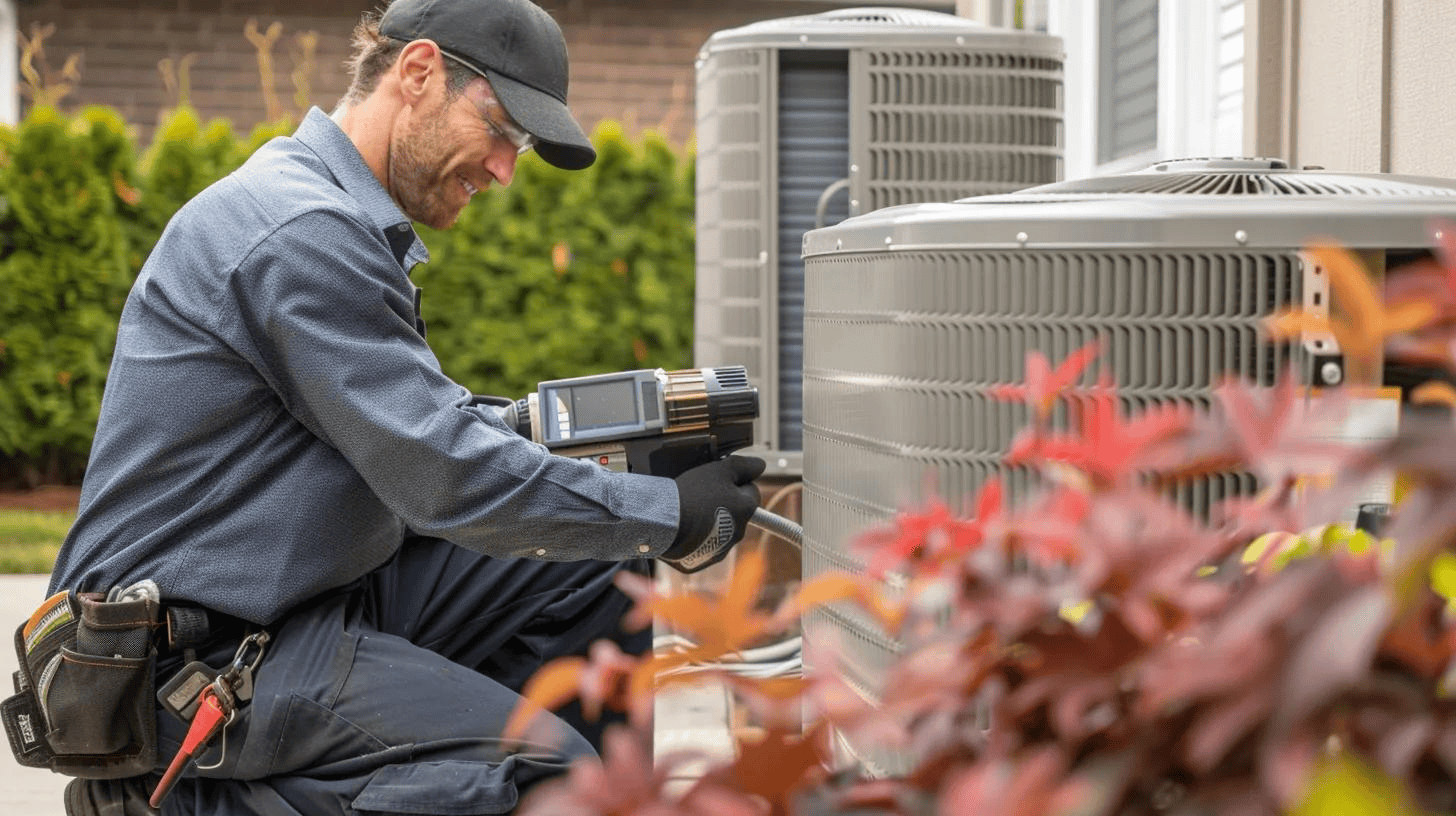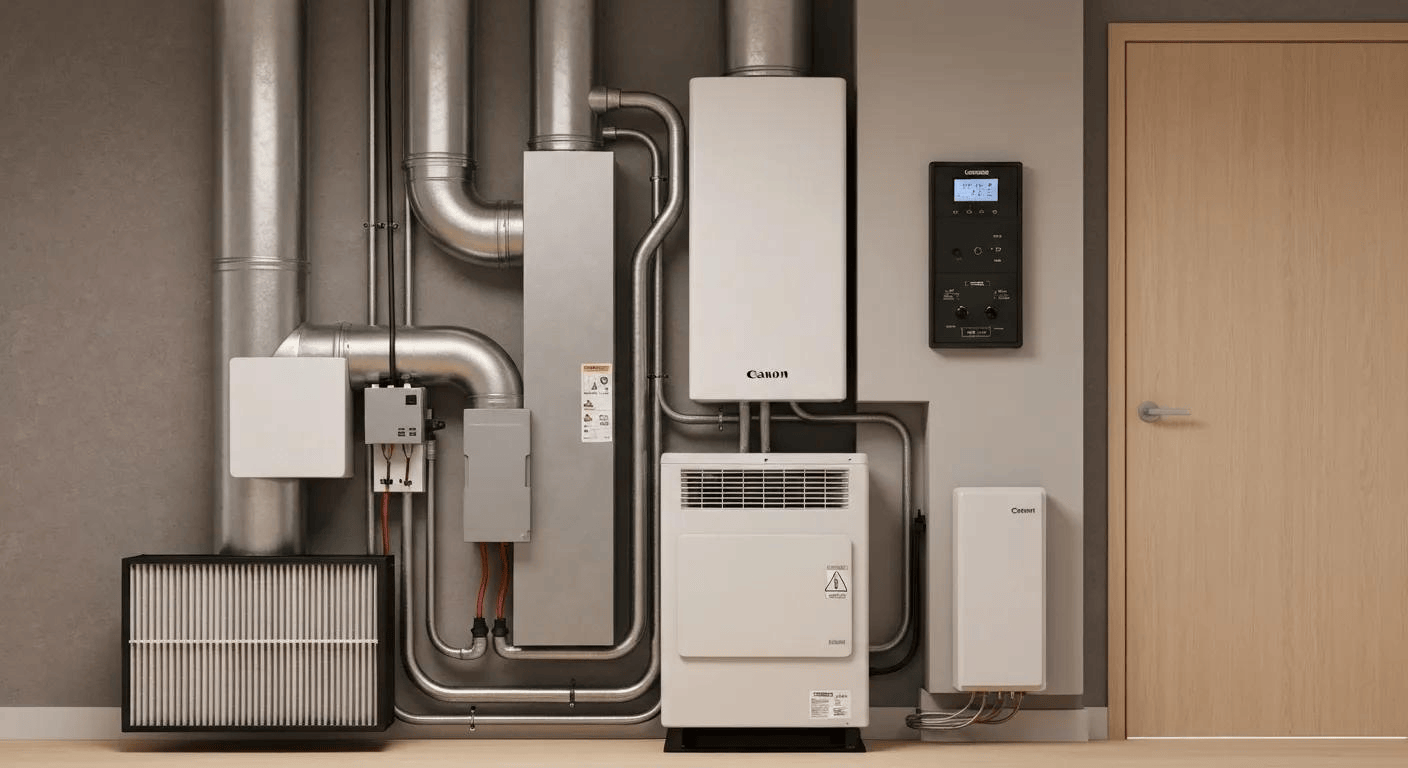What You Should Know About Carbon Monoxide: Protect Your Western Virginia Home
Carbon monoxide (CO) is often called the "silent killer." It's a colorless, odorless, and tasteless gas that can be deadly when inhaled. Understanding what carbon monoxide is, where it comes from, and how to protect your family is absolutely essential for ensuring the safety of your home here in Western Virginia. While invisible and undetectable by human senses, the dangers of CO poisoning are very real, making proactive awareness and prevention critical for every household.
Understanding the Invisible Threat: What is Carbon Monoxide?
Carbon monoxide is a byproduct of incomplete combustion. This means it's produced when fuels like natural gas, propane, oil, wood, kerosene, coal, and gasoline are burned without enough oxygen. When combustion is complete, the byproducts are primarily carbon dioxide and water vapor. However, when the fuel doesn't burn completely, CO gas is released instead.
Why is this gas so dangerous? When carbon monoxide is inhaled, it enters the bloodstream and binds to hemoglobin, the molecule in red blood cells responsible for carrying oxygen. CO binds to hemoglobin much more tightly than oxygen does, forming carboxyhemoglobin. This prevents the red blood cells from carrying oxygen effectively to the body's tissues and organs, including the brain and heart. This oxygen deprivation is what causes the symptoms of CO poisoning and, in severe cases, can lead to permanent brain damage, heart damage, or death.
The insidious nature of carbon monoxide lies in its stealth. You cannot see it, smell it, or taste it, meaning you can be exposed to dangerous levels without realizing it until symptoms begin to appear. This is why prevention and detection methods are so vital.
Where CO Hides: Common Sources in Your Home
Many common household appliances and systems that rely on burning fuel are potential sources of carbon monoxide if they are not properly installed, maintained, or vented. Understanding these sources is the first step in prevention.
Primary sources of CO in a home often include:
- Furnaces and Heating Systems: Gas or oil furnaces are significant potential CO sources, especially if the heat exchanger is cracked or the venting system is blocked or leaking. Proper maintenance of your [Heating] system is crucial.
- Water Heaters: Gas-fired water heaters also produce carbon monoxide and require proper ventilation.
- Gas Stoves and Ovens: While designed for indoor use, using these for heating or if not properly vented can release CO.
- Clothes Dryers: Gas dryers with blocked vents can cause CO buildup.
- Fireplaces and Chimneys: Wood or gas fireplaces can produce CO, particularly if the chimney is blocked or damaged, preventing proper draft.
- Generators: Portable generators should never be used indoors or in attached garages. They are a major source of CO and must only be operated outdoors, far away from windows and doors.
- Vehicles: Running a car or truck in an attached garage, even with the garage door open, can allow CO to seep into the home.
- Other Fuel-Burning Appliances: Kerosene heaters, charcoal grills (never use indoors), portable propane heaters, and lawn equipment stored or used improperly can also be sources.
In Western Virginia homes, particularly during cooler months when heating systems are in heavy use, ensuring fuel-burning appliances are operating safely and efficiently is paramount to preventing CO leaks.
Don't Ignore the Signs: Symptoms of CO Poisoning
Recognizing the symptoms of carbon monoxide poisoning is critical, but it can be challenging because early signs are often non-specific and can mimic common illnesses like the flu. Symptoms vary depending on the concentration of CO in the air and the duration of exposure.
Mild to Moderate Symptoms:
- Headache
- Dizziness
- Nausea and vomiting
- Fatigue or weakness
- Shortness of breath
These symptoms can be confusing because they often improve when the person leaves the contaminated area and worsen upon returning.
Severe Symptoms:
- Confusion or disorientation
- Severe headache
- Weakness or inability to move
- Loss of consciousness
- Collapse
- Chest pain (especially for those with heart disease)
- Cherry-red skin color (this is a less common but serious sign)
Prolonged exposure to even low levels of CO can cause chronic symptoms, including persistent headaches, fatigue, difficulty concentrating, and neurological issues.
Certain populations are at higher risk, including infants, children, the elderly, individuals with heart or lung disease, and those who are sleeping or have consumed alcohol, as they may be less aware of early symptoms.
Your Defense Plan: Preventing CO Poisoning
Preventing carbon monoxide poisoning involves a combination of active detection and ensuring that potential sources are operating safely.
1. Carbon Monoxide Detectors: Your Essential Early Warning
Just like smoke detectors alert you to fire, CO detectors are the only reliable way to be alerted to the presence of this gas in your home. They should be considered essential safety devices.
- Placement: Install CO detectors on every level of your home, especially near sleeping areas and over or near attached garages. For added protection, place them near fuel-burning appliances. Follow manufacturer instructions for optimal placement, as CO mixes with air and its density changes with temperature.
- Types: Choose detectors that meet current safety standards. Battery-powered, plug-in, or hardwired options are available, sometimes combined with smoke detectors. Ensure they have a battery backup if hardwired.
- Testing and Replacement: Test detectors monthly following the manufacturer's instructions. Replace batteries annually and replace the entire unit according to the manufacturer's lifespan (typically 5-10 years).
2. Beyond the Detector: The Role of Professional Maintenance
While detectors provide a crucial warning, the best defense is preventing CO leaks in the first place. This is where professional maintenance of your fuel-burning appliances becomes non-negotiable.
- HVAC System Checks: Your furnace is a primary potential CO source. Annual [Furnace Maintenance] by a qualified technician is vital. During a tune-up, technicians check for cracks in the heat exchanger, test for proper combustion, ensure venting systems are clear and undamaged, and verify that safety controls are functioning correctly. These checks are specifically designed to identify conditions that could lead to CO production or leakage before they become dangerous. This isn't just about efficiency; it's about safety.
- Water Heater and Other Appliance Checks: Ensure gas water heaters and other fuel-burning appliances are inspected periodically by a qualified professional to confirm they are venting properly and operating safely.
- Chimney and Vent Inspection: Have chimneys and flues for fireplaces and fuel-burning appliances inspected and cleaned annually by a professional to prevent blockages.
3. Safe Appliance Use and Ventilation:
- Never use ovens or gas ranges for heating.
- Never use charcoal grills, camping stoves, or portable propane heaters indoors or in enclosed spaces.
- Ensure proper ventilation when using gas appliances.
- Never run vehicles in attached garages.
What to Do in an Emergency
If your carbon monoxide detector alarms or if you suspect CO poisoning based on symptoms:
- Evacuate Immediately: Get everyone, including pets, out of the house and into fresh air.
- Call for Help: From a safe location, call 911 or your local fire department. Do not re-enter the building until first responders have deemed it safe.
- Seek Medical Attention: If anyone is experiencing symptoms of CO poisoning, seek immediate medical care. Inform medical personnel that you suspect carbon monoxide exposure.
Local CO Safety Expertise in Western Virginia
Protecting your family from carbon monoxide is a top priority, especially in a region like Western Virginia where heating systems are critical for comfort during a significant part of the year. Understanding the risks and implementing preventative measures is the best way to ensure peace of mind.
Our team is familiar with the specific needs and types of HVAC systems common in the Roanoke Valley and surrounding areas. We are committed to helping families stay safe and comfortable in their homes.
How Woods Family Heating & Air Conditioning Helps You Stay Safe
As part of our commitment to your family's well-being, carbon monoxide safety is integrated into our services, particularly our [Furnace Maintenance] and service visits.
Our qualified technicians are trained to identify potential CO hazards when working on your fuel-burning heating systems. We perform thorough checks of critical components like the heat exchanger and venting to ensure your system is operating safely. By scheduling regular [Heating] system maintenance, you're not just maintaining efficiency and lifespan; you're taking a vital step in preventing potential CO issues.
We understand the importance of comprehensive home safety. Ensuring your heating system is functioning properly and venting safely is a core part of protecting your home's indoor air quality and preventing serious risks like carbon monoxide poisoning.








